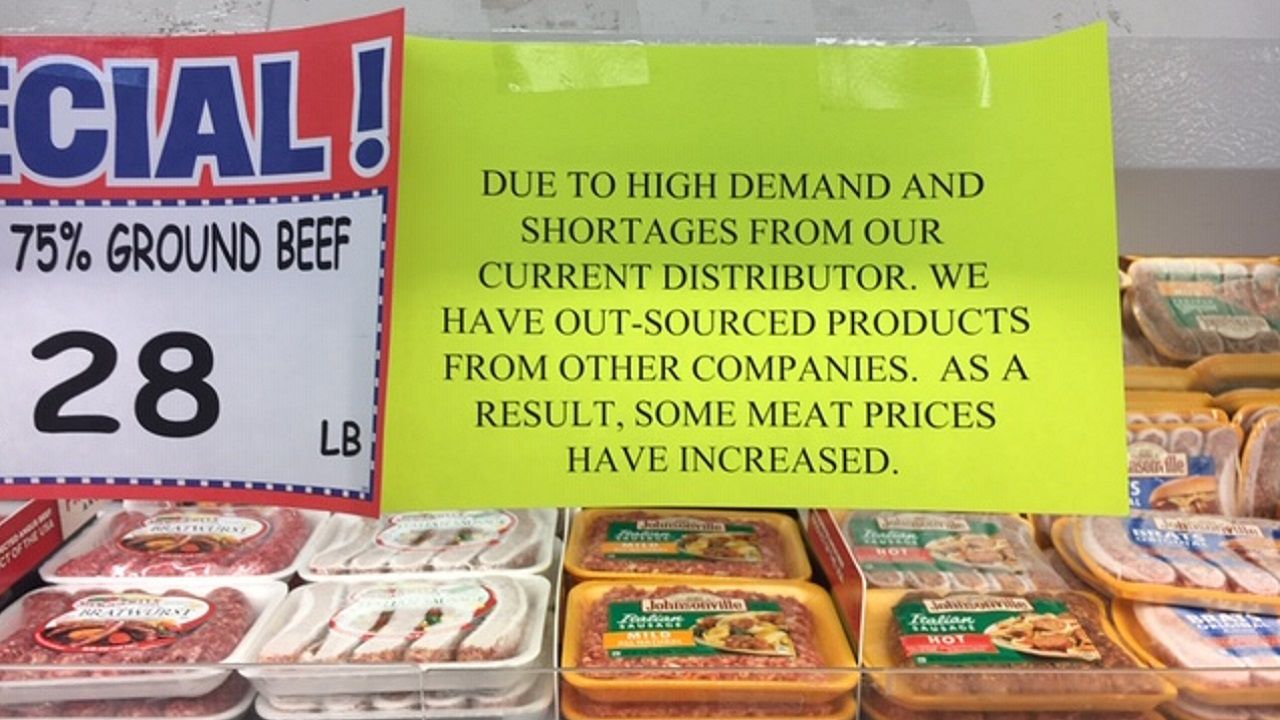TAMPA, Fla. — Food production issues, stay-at-home orders and extra expenses for grocery stores because of coronavirus are leading to sticker shock for customers.
What You Need To Know
- U.S. Bureau of Labor Statistics: Prices rose 2.6% from March to April
- Causes include increased demand, more expenses for supermarkets
- Meat production shutdowns cause shortages
According to the U.S. Bureau of Labor Statistics, grocery store prices rose 2.6 percent from March to April. Overall, it's the largest increase since 1974. In the case of some products though, prices have gone up by double digits compared to the past year, including the prices of eggs and meats.
Some of the problem has to do with demand going up because of stay-at-home orders and restaurants shutting down or limiting customers.
Other issues, however, include the safety measures, like Plexiglas and masks for supermarket workers, and delivery charges that come with ordering groceries online.
Meanwhile, shutdowns of processing plants because of workers falling ill have led to shortages of some products, especially in the case of meat. Pork and beef are especially affected.
It's not known how long the problem will last.
Information from CNN and Associated Press was used in this report.
